Checkdisout. A friend, Doc Kuljit, sent me a mail on hangover severity ratings. Haha! It was produced with the help of alcohol toxicology expert Prof Wayne Jones of the University of Health Sciences in Linkoping, Sweden. Unfortunately, dude did not work on rum and gin.
Bigot.
Hangovers are a bitch, a bitch whose antidote i once wrote about (bacon!). Am waiting for some smart-ass prick to create a hangover cure in a pill. I’ll take a carton right off the bat.
Probably the best-known cure at the mo is staying drunk.
I did some research and the info below seems accurate. Whisky & brandy consistently get high marks for giving hangovers.
So its worth knowing.
If u gotta be an alco, be an informed alco.
VODKA
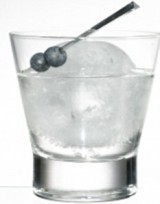
Good to know: Vodka is least likely to give you a hangover.
Vodka is made by fermenting grains or crops such as potatoes with yeast. It’s then purified and repeatedly filtered, often through charcoal, strange as it sounds, until it’s as clear as possible. (Some vodkas, like Smirnoff, are triple-filtered, making it as close to clean ethanol as possible.)
CALORIES: Because vodka contains no carbohydrates or sugars, it contains only calories from ethanol (around 7 calories per gram), making it the least-fattening alcoholic beverage. So a 35ml shot of vodka would contain about 72 calories.
PROS: Vodka is the ‘cleanest’ alcoholic beverage because it contains hardly any ‘congeners‘ – impurities normally formed during fermentation. These play a big part in how bad your hangover is.
Despite its high alcohol content – around 40 per cent – vodka is the least likely alcoholic drink to leave you with a hangover.
CONS: Vodka is often a factor in binge drinking deaths (no shit? Haha!) because it is relatively tasteless when mixed with fruit juices or other drinks.
HANGOVER SEVERITY: 3/10
.
BEER 
Slow mover: Low in alcohol, beer is the least dangerous to drink.
Beer is made by fermenting barley. Hops are added for flavour and yeast to make the grains ferment into sugar and alcohol.
CALORIES: It’s the most calorie-rich alcoholic beverage – one pint (468ml) contains between 170 and 200 calories.
PROS: Beer is the least dangerous to drink and makes you feel you drunk the slowest. It has the lowest alcohol content – between 3 and 6 per cent for lager, and up to 8 per cent for ale and stout.
A pint also contains more than a quarter of an adult’s recommended dose of Vitamin B folate, which stops the build-up of homocysteinea chemical linked to heart attacks.
CONS: Beer is high in compounds called purines, which boost the levels of uric acid in the blood, according to a study at Massachusetts General Hospital. This can form crystals in joints, leading to painful attacks of gout.
Meanwhile, research published in the International Journal of Cancer showed that one pint a day adds a 10 per cent risk of bowel cancer, while two pints a day increases the risk by 25 per cent.
HANGOVER SEVERITY: 4/10
.
WHITE WINE
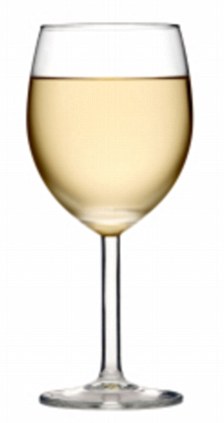
White wine is made from the fermented juice of grapes stripped of their seeds and skins.
CALORIES: Around 130 calories per 175 ml glass; slightly more in sweeter wines.
PROS: American researchers found that grape flesh contains the chemicals tyrosol and hydroxytyrosol, which help lower artery-clogging LDL cholesterol.
CONS: It’s the sulphites formed naturally or added to white wine as preservatives to stop it going brown, which are the most likely cause of the ‘white wine hangover’ many people complain of.
Sulphites also carry the risk of an allergic reaction which can worsen symptoms such as a headache, or asthma. White wines also wear away tooth enamel faster, making teeth more sensitive.
HANGOVER SEVERITY: 6/10
.
RED WINE
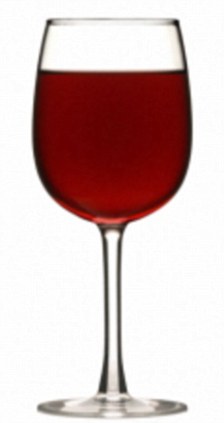
Red wine is made from fermented grape juice – but unlike white wine, with the skin and pips included. It’s then left to mature for a minimum of three years, during which pigments from the skins leech out and colour the wine red.
CALORIES: Around 120 calories in a standard glass – it’s slightly lower in sugar content than white wine.
PROS: Contains more reservatrol – a plant antioxidant – than white wine. This helps to prevent blood clots and reduce inflammation, which is now considered to play a key role in heart disease. Also, the pips and skins used in red wines contain tyrosol and hydroxytyrosol, chemicals which help lower artery-clogging LDL cholesterol.
CONS: Red wine drinkers can get worse hangovers than beer or white wine drinkers. Because of the way it’s made, red wine produces two types of alcohol – ethanol and methanol. The liver processes the ethanol part of the drink first and leaves methanol until last. ‘As a result, it’s likely to be floating around in the body for a lot longer than ethanol, giving you that familiar “morning after” feeling, says Professor Jones.
HANGOVER SEVERITY: 7/10
.
CHAMPAGNE

Fast-acting baby.
Champagne and sparkling wine are made in roughly the same way as wine – but then more yeast is added and it’s left to ferment in the bottle a second time, producing carbon dioxide.
CALORIES: An average 175 ml glass of Champagne contains 133 calories, slightly more than a glass of white wine because syrup is added to improve taste.
PROS: The antioxidants in Champagne may help protect your brain against damage incurred during a stroke and against neurological disorders such as Parkinson’s and Alzheimer’s diseases, according to a team of researchers from the University of Reading. They found that high levels antioxidants, called caffeic acid and tyrosol, helped protect brain cells from damage.
CONS: The bubbles speed up the absorption of alcohol into the bloodstream. And contrary to popular belief, Champagne won’t lift your spirits – alcohol affects brain receptors in the same way, whatever its source.
‘Alcohol basically works in the same way in the brain receptors as Valium,’ says Professor Jones. ‘It depresses brain activity and relieves anxiety. You might think you’re in a good mood, but it’s more likely the result of alcohol causing “disinhibition”, making you more talkative and exhibitionist.’
HANGOVER SEVERITY: 7/10
.
SCOTCH WHISKY
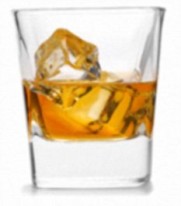
Whisky or Scotch is distilled from fermented grains, such as barley or wheat, then aged in wooded casks.
CALORIES: About 80 calories per 35ml shot.
PROS: Single malt whiskies have been found to contain high levels of ellagic acid, according to Dr Jim Swan of the Royal Society of Chemists. This powerful acid inhibits the growth of tumours caused by certain carcinogens and kills cancer cells without damaging healthy cells.
CONS: Whisky ‘madness’ – erratic and unpredictable behaviour – is a common problem with drinking whisky. It’s caused by the way most people drink it – neat, explains Professor Jones.
His experiments show that among people drinking the same amount of ethanol, those drinking it in the form of spirits, such as whisky, had the quickest and highest peak in the blood alcohol concentration, which occurred less than an hour after drinking began.
“If you drink any alcohol on an empty stomach, it can compare with getting it intravenously, ” says the prof. (How cool!)
‘To slow absorption down, you could take it very much diluted or along with a rich, calorie-dense ingredient such as cream, as in Baileys or Irish coffee.'”
Whisky also contains lots of congeners, which tend to form during the ageing process in oak casks. A study by the BMA found that as a result, Bourbon Whiskey is twice as likely to cause a hangover as the same amount of vodka.
HANGOVER SEVERITY: 8/10
.
BRANDY
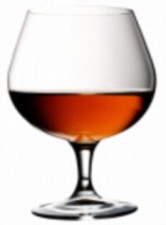
Hangover hell? Brandy contains high amounts of impurities
Brandy is a spirit distilled from red wine. Fine brandies are aged for extra flavour in wooden casks.
CALORIES: Around 80 in every 35ml shot.
PROS: Because brandy is a distillation of red wine, it contains a high concentration of antioxidants which mop-up ‘free radicals’ which, it’s claimed, can damage the body organs and tissues.
Australian scientists discovered that the antioxidants created during the distilling process mean that 30ml of good brandy would give the equivalent antioxidant hit of the daily recommended intake of vitamin C.
CONS: It could give you the worst headache of all, according to research at London’s National Hospital for Neurology and Neurosurgery. This is closely followed by red wine, then rum, whisky and gin. Not only does brandy contain at least 40 per cent alcohol, the high quality cask-aged variety is likely to have the highest amounts of congeners, which are formed during the lengthy storage and fermentation process.
Professor Jones says: “Brandy contains literally hundreds of different volatile compounds, which gives it the distinctive pleasant smell but also contributes to the hangover.”
HANGOVER SEVERITY: 9/10
.
The next time u get trashed, u can come up with your own rating.
Good luck!










